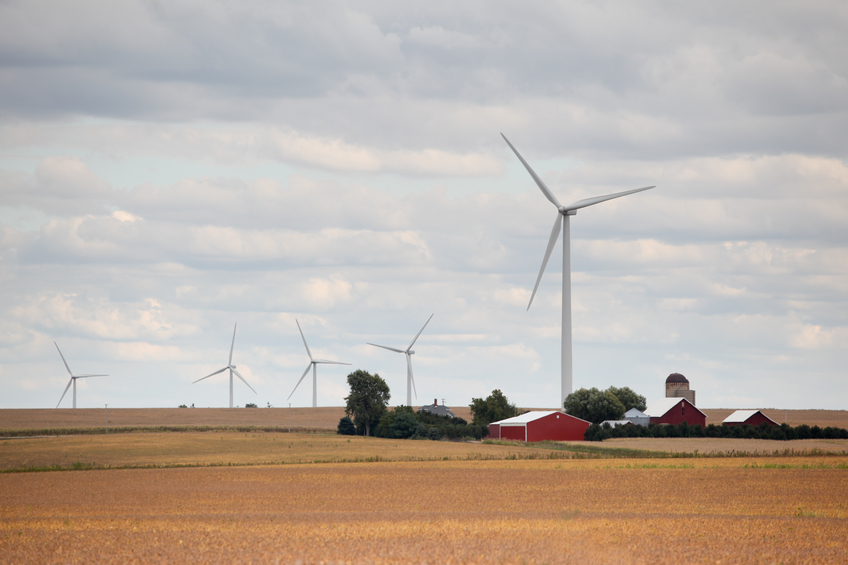Construction of the 205 MW White Creek Wind Project in Klickitat County, Wash., was completed at the end of November 2007, ahead of schedule and under budget. The project, which was initiated by four Washington utilities, became a reality with the help of a unique power prepay arrangement that both accesses tax credits from the project and reduces the price end users will pay for the project's power output. While the power prepay helped White Creek's utility sponsors combine their resources to develop the project, 100% of the resulting utility-scale capacity cannot count toward the state's renewable portfolio standard (RPS).
‘The financing of the project was set up in such a way that the utilities, on their balance sheets, floated bonds and prepaid for the power that is going to be delivered to their customers by this wind farm,’ says Maura Schoenfeld, president of Meridian Companies' subsidiary Meridian Clean Fuels, a Massachusetts-based renewable energy tax credit advisor. ‘I believe this is the first time financing has been done by utilities with the power prepay.’
As nonprofit organizations that are unable to take advantage of production tax credits, the original utility sponsors of White Creek – Tanner Electric Coop. (TEC), Lakeview Light & Power (LL&P), Cowlitz County Public Utility District (PUD) and Klickitat County PUD – sold the project to White Creek Wind I LLC, a pass-through entity arranged by the broker-dealer arm of Meridian Companies. Meridian acted as owner of White Creek Wind I during construction, which was financed by HSH Nordbank.
‘[HSH] provided construction financing for $350 million,’ says Schoenfeld, ‘and that was paid in full by the utilities and the tax equity partners.’ When construction was completed, White Creek's equity sponsors – Lehman Brothers and Prudential Capital Group – became official owners of White Creek Wind I in order to receive the project's tax credits.
Several components make up the price the utilities pay for White Creek's power.
‘A level of generation was established at [predictive value (P)] 99, and that sized the amount of their prepayment for the wind power that is going to be generated over a 20-year period,’ says Schoenfeld. ‘The prepayment is part of the purchase price of the power over 20 years, that's tier one. The prepay is set at P99 to give everyone comfort over the 20-year period because that is a guaranteed delivery.’
If first-tier power is not delivered, alternate power must to be delivered to the utility. A second tier covers any power delivered from the wind farm over the P99 level of generation.
‘In some years, the project will deliver much more than the P99 level, so there is an additional payment for tier-two power,’ Schoenfeld says. ‘In addition, there is a pass-through of operating costs to the utility. All three combined are taken in context for the price of power for the utilities.’
The actual price the utilities pay is confidential, but Schoenfeld says it is less than they would have paid under a traditional power purchase agreement (PPA). Ultimately, she adds, ‘the power prepay brings down the price customers would pay for that wind power.’
The sponsoring utilities also hold an option to buy back the project after 10 years.
‘The repurchase option is at fair market value,’ says Schoenfeld. ‘And, it's still a more beneficial pricing structure with that fair market buyout than if they did the project with the 20-year PPA.’
Although the power prepay structure allowed these small utilities, which have a combined total of about 71,000 customers, to develop Washington's second largest wind farm, the entire project capacity will not be applied to the state's 15% by 2020 RPS. Of White Creek's four sponsoring utilities, only Cowlitz County PUD serves the requisite number of customers stipulated for qualifying utilities under the RPS. Consequently, the power that TEC, LL&P and Klickitat County PUD purchase from the project will not count toward the renewables mandate. Snohomish County PUD signed a traditional PPA with White Creek Wind I for 10% of the project's output. As Washington's second largest publicly owned utility, Snohomish County PUD qualifies for the RPS and can apply its White Creek purchase to the mandate.
Schoenfeld believes the financial paradigm that supports White Creek likely will become a popular option for other utilities seeking alternatives to traditional PPAs in regulated markets.
‘We're starting to see utilities that, prior to this, felt their only way to access renewable generation was to buy it on a long-term agreement with a developer,’ says Schoenfeld. ‘Now, we're seeing more interest from these utilities in developing projects up to a point and then using the [power prepay] structure to finance projects in order to benefit from the lower price of power.’



